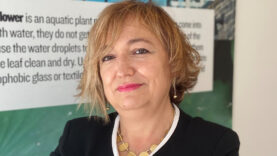Antibiotic medicines were one of the great scientific discoveries of the 20th century. However, we have used them so much that bacteria have learned to defend themselves; antibiotics are no longer working. This poses enormous risks - the smallest injuries could have fatal consequences. So, as well as working to develop new drugs, scientists are investigating new technologies for detecting resistant bacteria. Spotting threats early accelerates proper diagnosis and treatment.
It is therefore essential to develop new technologies to deal with this threat. Some lines of research are studying new antibiotics against superbugs, others are looking for new ways to attack microbes to prevent them from developing resistance, such as therapies based on bacteriophage viruses. But there is also a need to invest in better solutions for detecting multi-resistant bacteria. On the one hand, we need systems capable of finding new threats, systems that can discern which micro-organisms are truly dangerous. On the other hand, there is a need for techniques that can identify superbugs sensitively, quickly and efficiently, so that rapid diagnostic and treatment decisions can be made. A better understanding of how pathogenic micro-organisms act, as well as their correct identification, should lead to a more rational use of antibiotic drugs.
Since 2010, 16 new antibacterial treatments have been launched in the US, only two in Japan and just one of the two approved by Canada. Of the 16 that were cleared by the European Medicines Agency, 13 have been launched, although some are not available in all EU countries. The WHO's Global Action Plan (GAP) on antimicrobial resistance, agreed in 2015, set the goal of achieving a "sustainable economic case" over the next decade. But there is not yet a country-by-country roadmap that can be implemented from 2023 to meet that forecast by 2025. The five largest clinical research organisations have a capitalisation of $24.8 billion, 40 times less than that of the five largest pharmaceutical companies ($1.9 trillion).
Between 30% and 50% of all antimicrobials prescribed to human patients are unnecessary.
The European Centre for Disease Prevention and Control (ECDC) has estimated that, to date, between 30% and 50% of all antimicrobials prescribed to human patients are unnecessary, and such over-prescription further promotes the development and spread of resistance. There are two basic diagnostic needs to be met by AST tests. First, for physicians to quickly identify antibiotics that can be used to successfully treat patients infected with bacterial pathogens. Secondly, epidemiological assessment, i.e. the detection of phenotypic resistance mechanisms and the monitoring of their spread.
Companies that want to innovate treatments still have to overcome a complex Valley of Death because the total cost of developing an antibiotic with ten years on the market is estimated at 1.7 billion dollars, but it is not easy to obtain revenues to recover the investment during the first decade of the new treatment's life. A substantial part of innovation should be to find appropriate ways to fund the R&D that will prevent the annual number of deaths from reaching 10 million by 2050, as current estimates suggest, with a particular incidence in low- and middle-income countries.
Many current diagnostic technologies are effective, but costly; time-consuming; fail to detect emerging resistance markers; fail to achieve a pure live culture of the bacteria; and do not rapidly discriminate bacterial or fungal infections from viral infections. Additional research and investment is needed to improve diagnostic tests and the data they generate. Having information on resistance at the time a patient is first treated helps to target the use of broad-spectrum antibiotics to those patients with resistant infections when they need them and avoids unnecessary use in those who do not.




